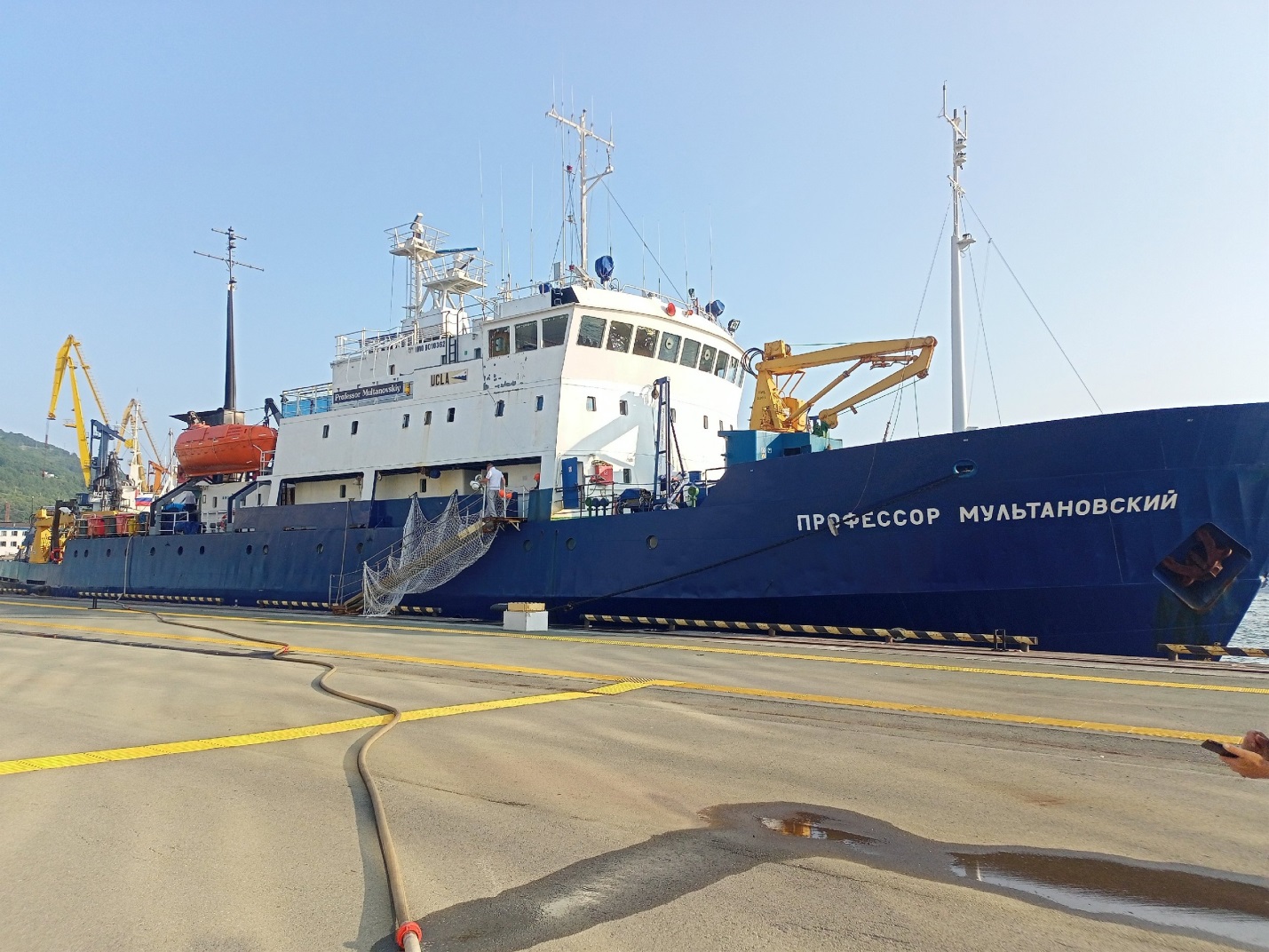Research expedition within the Federal Scientific and Educational Program “Floating University”, that engaged the geo-ecologist of SPC RAS, investigated the anthropogenic load on the coastal waters of the South-Eastern part of Kamchatka by assessing the population of bacteria that characterize water pollution. The maximum indices of pollutants were recorded in the Avacha Bay, where the port city of Petropavlovsk-Kamchatsy located. The received research results can be used at assessing the environmental situation of the coastal zone.
Avacha (Inlet) Bay is positioned at the South-Eastern coast of the Kamchatka Peninsula. It is one of the largest ice-free bays on the planet, due to this fact the port city of Petropavlovsk-Kamchatsky, located on its shore, is able to host a vessel of almost any size.
However, an active economic development of the Avacha Bay requires parallel constant monitoring of the anthropogenic load on the territory. In particular, we are talking about coastal waters, where flows of pollutants from land and sea may collide. Once in the water, they can get decomposed with the involvement of certain bacteria types, provoking a change in their numbers. Therefore, the quantitative indication of such microorganisms may already at the early stage indicate contamination of the reservoir, say, with petroleum products.
“We have applied the method of microbial indication to study the coastal waters of South-Eastern Kamchatka. Our objective was to identify the distribution features of microorganisms of various indicator groups, where each one may indicate the presence of certain pollutants,” says Ksenia Zaripova, Junior Researcher of the Laboratory of Complex Problems of Limnology at SPC RAS.
Sampling took place during the expedition aboard “Professor Multanovsky” within the Federal Scientific and Educational Program “Floating University". Its main goal is to do research in the marine sciences on the principle of “learning through research". The program format implies the formation of pairs of students and supervisors representing scientific peers, thus, to encourage and give a good chance for the university students to start their research careers as the ocean scientists, and let the already established research teams practice this topic to fill later the personnel deficit.
Work area was chosen in the coastal waters of Kamchatka and adjacent areas of the Pacific Ocean and the Sea of Okhotsk. Research in the Marine Ecology Squad was exercised under the guidance of Leading Researcher, Head of the Laboratory of Chemoecology at the A.O. Kovalevsky Institute of Biology of the Southern Seas of RAS (FRC InBUM) Elena Tikhonova. FRC Inbume also provided research equipment and nutrient media for bacteria. The expedition work took 36 days.
“To join the Program, I had to go through several preliminary stages. First, I went through the winter scientific school of the “Floating University”. Then filled out an application for participation in the expedition, that also included a motivation letter. Then my application was selected for an interview by the scientific supervisors. The interview result was successful, so I became a member of the squad,” tells Ksenia Zaripova.
Expedition arranged for by the “Floating University’ was targeted at a comprehensive assessment of the state of ecosystems of the Far Eastern seas through various methodological approaches and a retrospective analysis of abiotic environmental factors, as well as the training of a youth personnel reserve in marine sciences. In particular, Ksenia Zaripova, as part of her work in the marine ecology squad, executed the selection of bottom sediments and water from the surface and bottom horizons, sample preparation for further analysis, preparation of extracts for subsequent determination of hydrocarbon content and analysis of bacteria numbers from different indicator groups by marginal dilutions.
“At the moment, results have been received on the bacteria numbers in the Avacha Bay of different indicator groups: heterotrophic, hydrocarbon oxidizing, lipolytic and phenolic oxidizing. The number of groups is unevenly distributed in the coastal waters of the South-East of Kamchatka. However, we recorded the maximum values in the area of the Avacha Bay, characterized by significant anthropogenic load. These data, together with further study of the hydrocarbon content in sediments and water, will permit to assess the ecological condition of the coastal territory,” the scientist explains.
Marine ecology squad, led by researchers from FRC InBUM, engaged young scientists from the Institute of Limnology of the Russian Academy of Sciences, a separate structural division of SPC RAS, Moscow State University, DonSU.
Results of the study were presented at the International Scientific and Practical Conference "Marine Research and Education (MARESEDU - 2023)" and at the All–Russian Scientific Conference "Topical Issues of Ecology of Aquatic and Coastal Ecosystems" at the A. O. Kovalevsky Institute of Biology of the South Seas of the Russian Academy of Sciences.
